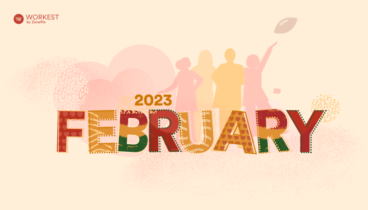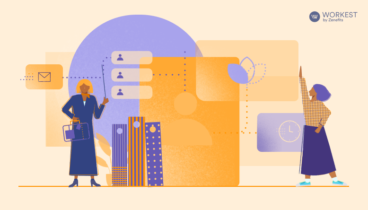Hear from 4 Diversity, Equity, and Inclusion Specialists about how to create workplaces that are equal for all — and why today’s movement against injustice feels different.
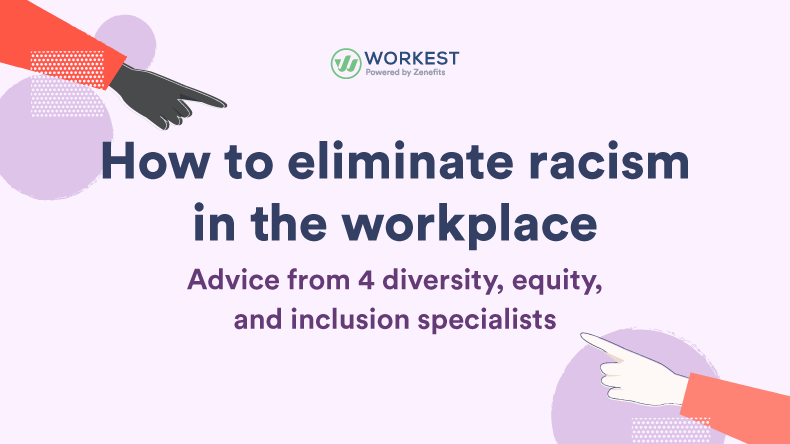
Here's what you need to know:
-
Unconscious bias training can be an important first step for companies in combatting racism and being aware of stereotypes
-
The right policies are crucial. Making decisions about other people without structure can lead to unconscious or conscious bias
-
There has to be buy-in from senior leadership for D&I training, and leaders need to demonstrate the values of the company
-
Companies should host listening circles or hearing forums with professional facilitators who have facilitation experience, D&I expertise, and clinical expertise
-
Don’t ask BIPOC to lead the charge on sharing their observations or solutions — it’s not their problem to solve
-
Companies — through their values, policies, and processes — can force behavior change and through that, a mindset shift
Note: This story was last updated February 11, 2021
Racial injustice in the United States has continued to have a lot of companies talking. We’re seeing organizations take a public stand against racism and discrimination unlike any other time in history. Yet without doing the work to create more measurably equitable workplaces, the messaging falls flat.
Building lasting diversity, equity, and inclusion in your organization is necessary to combat structural racism. However, it requires more than decrying racism on social media or hosting one unconscious bias training — though both are important. Workest spoke to 4 diversity, equity, and inclusion specialists to hear about ways companies can continue to make systemic change.
Unconscious bias training is an important first step

Lauren Aguilar, PhD and Head of Diversity and Inclusion at Forshay says her consulting firm has been fielding requests for other types of training — which is exciting — but that unconscious bias training is still necessary.
“There’s this new demand for 1) anti-racism training and 2) allyship training. Three weeks ago, companies were not ready for that. It was too deep, too self-reflective, too inflammatory,” Aguilar says.
“We wouldn’t have heard the word ‘racism’ from a company. And now, there is more of a readiness, but I caution around skipping over unconscious bias. Companies need that training because unconscious bias is how our brains hold stereotypes, which is part of the bones of structural racism.”
Unconscious bias training is about recognizing bias. The trainings often, through demonstrations, show how minds work in ways that are beyond conscious awareness or control. From these demonstrations, people can realize how they make, and sometimes act on, judgements based on someone’s race.

“Awareness of unconscious bias is just knowing that we’re human and that we’re going to put people in categories,” Talia Fox, global leadership strategist and CEO of KUSI Global says.
“It’s a very non-alienating way of helping people in organizations lean into issues of race, inequity, and diversity and inclusion. Once you have the awareness, we can support organizations in identifying what to do with that awareness,” Fox says.
Policy change has to follow
“When people in power make decisions about other people without structure, that’s when our brain reverts to unconscious bias or conscious bias.”Aguilar says the right policies are an important part of the framework for reducing bias. For example, when her company does a hiring funnel analysis, there’s always at least one place where more White candidates are getting through than Black candidates.
“For some, it might be the resume review and for others it’s the face-to-face. When we review the process, we find there is no behavioral interview protocol. The interviewer is just going off of gut reaction, and when people in power make decisions about other people without structure, that’s when our brain reverts to unconscious bias or conscious bias,” Aguilar says.
How can companies add structure and remove bias during the hiring process? When reviewing resumes, blind hiring can be a first step. The process of blind hiring removes all defining characteristics from resumes like names, genders, and pronouns. Unstructured interviews — while having a conversational flow that some interviewers prefer — can actually lead to subjectivity. To add objectivity, teams can use interview scorecards. A scorecard can help measure applicants’ responses by a well-defined five-point or letter-grade scale. Through this policy, companies can use quantifiable records that show equal consideration to candidates.
Using a software tool for hiring loops is another approach to reducing bias. Colleagues often influence each other when discussing a candidate, so a way to eliminate that is making feedback loops private. This way, each colleague can enter in their own assessment of a candidate into a tool before seeing everyone else’s.
Buy-in from the top matters
Employees can tell when the effort is inauthentic, and they won’t buy it.
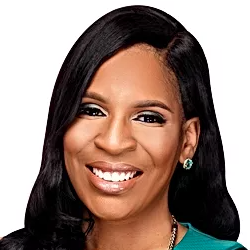
“For one of the things for diversity inclusion training, there has to be buy-in from your senior leadership. When training is rolled out or introduced without buy-in from the executive leadership, employees see that and remark, ‘Well, you had this training, but yet I don’t see these individuals embodying the specific training that you’re delivering to us,’” Angelique Hamilton, founder of HR Chique Group says.
Nor is the workplace willing to keep quiet about the mismatch of public persona versus in-house practice any longer.
“Employees are calling out leaders who are not exhibiting those behaviors, and they’re calling out companies too. Like, ‘Oh yes, we are a very diverse organization and we practice so and so. And we are supportive of our team members.’ But these employees are saying, ‘No, actually you’re not,’” Hamilton says.
Nicole L. Turner, HR Consultant and founder of Nicole L. Turner Consulting, adds that you must be willing to hold leaders to company values.
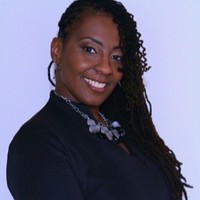
“It starts with core values. You have to have defined core values. Everything stems from what they believe — compassion, inclusivity, etc. Whatever these are, must be tied to mission and overall business strategy. And hold leaders accountable. If inclusion is part of your core values, it makes it easier from an accountability perspective.”
Professional facilitation is a must
Companies, either feeling pressure to respond — or authentically taking advantage of this moment to address racism both inside and outside the company — are hosting all manner of listening circles or hearing forums. But without professional assistance, these conversations can go awry.
“We’re seeing some going well and some going really terribly. They go well when they are led by an expert facilitator who has facilitation experience, D&I expertise, and clinical expertise because there’s a lot of trauma that comes up, and a lot of misunderstanding,” Aguilar says.
Bernice Feller-Thijm, D&I Specialist and Founder of JustB Agency echoed the call for professional expertise. “You must put a system in place as a company to have those dialogues on a structural basis, and they really must be facilitated by an expert who can provide that safe place, where you can have that conversation,” she says.
“You must put a system in place as a company to have those dialogues on a structural basis, and they really must be facilitated by an expert who can provide that safe place, where you can have that conversation.”
This work is for allies to do
The conversations about white supremacy and about white fragility are uncomfortable. Historically, organizations have skirted focusing on the ways White people have privilege in favor of discussing strategies for making Black, indigenous, and people of color (BIPOC) feel more comfortable in the workplace.
“Invite Black employees to participate in whatever level they would like to, but at the same time offer support and make it clear that there is absolutely no need for them to problem solve. It’s not their problem to solve. It’s the allies’ problem to solve,” Aguilar says.
Recognize the difference in lived experiences but don’t ask BIPOC to lead the charge on sharing their observations or solutions.
“This cannot be something that’s focused only on marginalized groups. The culture has to take a stand that ‘this is something that everyone’s involved in.’ You have to both provide support and realism to the unique experiences and that is systematic racism, that is the reality of Black and brown people all over the globe,” Fox says. “Don’t go to your organization to just find the Black people and ask them to lead a movement,” she adds.
“There is a point of privilege that your White coworker will experience over someone of color.”Hamilton notes many people won’t feel comfortable sharing, and understandably so. “There is a point of privilege that your White coworker will experience over someone of color. I can tell you from personal experience that oftentimes most people of color will not speak up when it comes to explaining the experiences and observations that people of color have in the workplace,” Hamilton says.
Expectations catalyze change
Changing people’s minds is an admirable goal. But Fox says that companies — through their values, policies, and processes — can force behavior change. From this, mindset shift can follow.
“Organizations, where they have power, is that you may not be able to change people’s minds and hearts overnight, but you can create expectations for behavior in your culture,” Fox says.
“Based on what your leaders say, what you’ve invested in, and the kinds of conversations that you have, you can send a very clear message that we don’t tolerate certain kinds of behavior. Period. And everyone will fall in, even if they have hidden bias and racism. The people will mold and adapt to the expectations and the values and systems that you put in place, or it’ll be very clear where your people that are not a good fit for your culture lie,” she says.
Transformation happens with a shift
All of the diversity, equity, and inclusion specialists interviewed for this article agreed that the current movement against racism and injustice feels distinct, and that we could be on the precipice of real change.
“I just feel like this is a paradigm shift that we’re going through right now, trying to transition our workplaces to places of work that are equal to all. That’s what everyone is asking. Whether you are someone who has a disability, whether you’re trans, whether you’re Black, whether you’re Hispanic, everyone wants to be treated fairly,” Hamilton says.
Fox believes for lasting change, a fundamental shift needs to occur.
“I’d like to see organizations and people being pulled by purpose, being pulled by a vision of a different world and a different life. I’m waiting to see what you do when you don’t feel this political and social stress. When the stress lets up, is your motivation gone? My hope is for the pull.”



